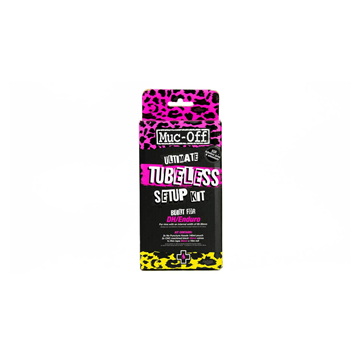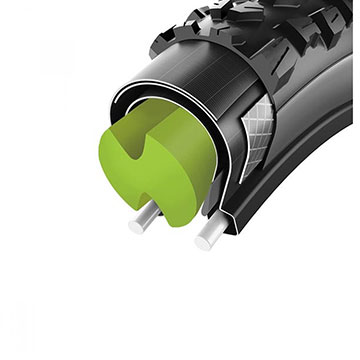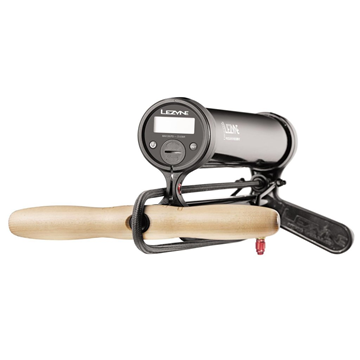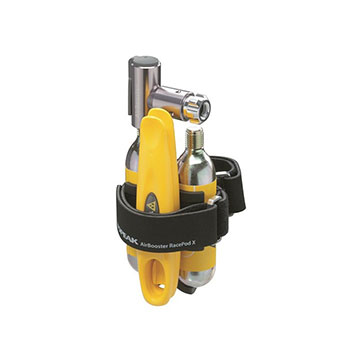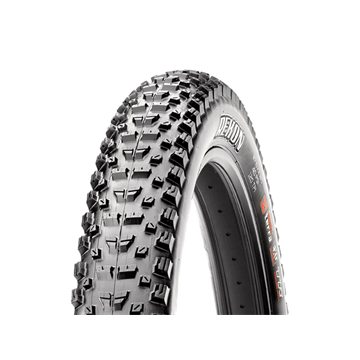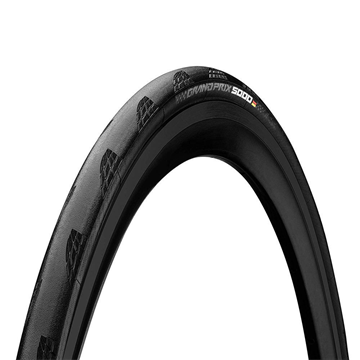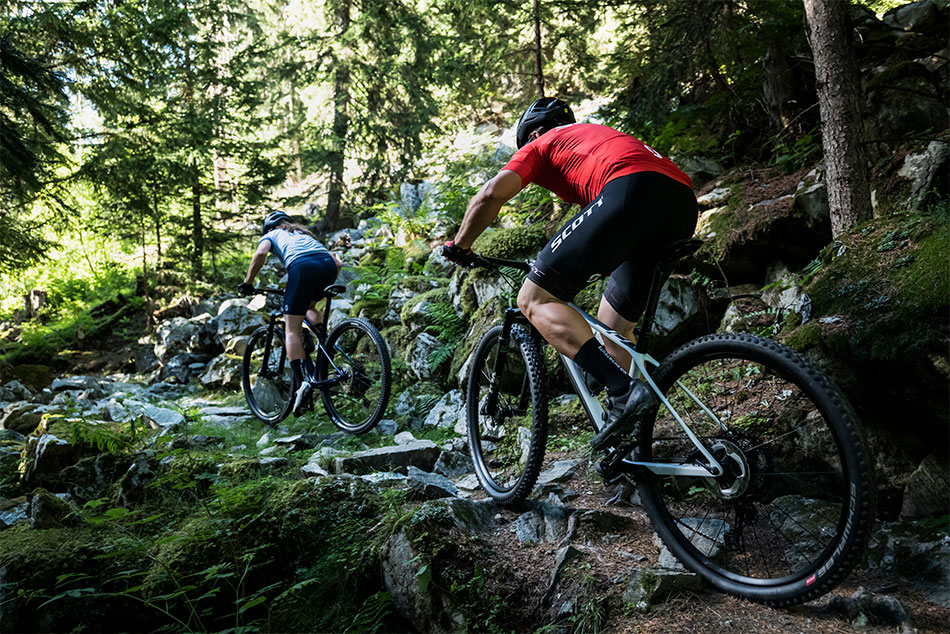 Scott Scale RC 900 Team
Scott Scale RC 900 Team
What is the Tubeless System?
Tubeless tires are mounted directly onto the rim of the wheel without an inner tube. Unlike conventional tires, tubeless tires don't have an inner tube, making them a popular choice for both cyclists and mountain bikers alike. Originally used in car tires, the concept was adapted for bikes and comes in two primary forms: the original Universal System Tubeless (UST) and the more modern Tubeless Ready system.
Types of Tubeless Tires: UST and Tubeless Ready
The first tubeless system for bicycle wheels was patented by French brand Mavic back in 1999. Known as the Universal System Tubeless or UST, this system ensures that the tire bead fits snugly into the rim's profile, creating a stable and airtight seal. UST tires have fully sealed rims with a double-wall design at the bottom to cover the spoke holes, eliminating the need for rim tape.
UST tires are reinforced to maintain bead stiffness and prevent porosity, ensuring a watertight system. This reinforcement, however, adds more rubber to the tire’s composition, making it heavier than a standard tubeless tire. To address this weight issue and expand the system to various wheel types, manufacturers introduced the Tubeless Ready system.
Tubeless Ready tires and rims aren’t UST compliant but are designed to accommodate tubeless setups. Here are the key differences between the two systems:
- Rims no longer have sealed holes with a double-wall design and require rim tape to seal the spoke holes.
- Tyres no longer have specific beads for the rim and are lighter thanks to increased TPI (threads per inch) and less rubber in their construction.
While this weight reduction decreases sidewall strength, brands have developed a variety of models balancing weight and strength to cater to different needs and disciplines. Porosity increases with the Tubeless Ready system, making sealing fluid essential. Even UST tubeless tires benefit greatly from the use of sealing fluid, which provides an excellent anti-puncture solution.
Which Wheels Can Be Converted to Tubeless?
Nearly all mountain bike wheels can be converted to tubeless setups. To convert a regular wheel to tubeless, you’ll need tubeless valves, specialized rim tape to cover the spoke holes, and sealing liquid.
Until recently, tubeless road tires were only compatible with specific tubeless rims, like those from Mavic or Shimano. Today, conversion kits are available for virtually any road wheel, though they still require tubeless-compatible tires.
We explain the full process of converting regular wheels to tubeless in this video:
Puncture protection for tubeless tires can be enhanced with tubeless tire foam or the mousse system, which is inserted inside the tire to provide extra resistance against cracks and rim damage. Notable examples include the Vittoria Airline and Tannus Armour, both second-generation models.
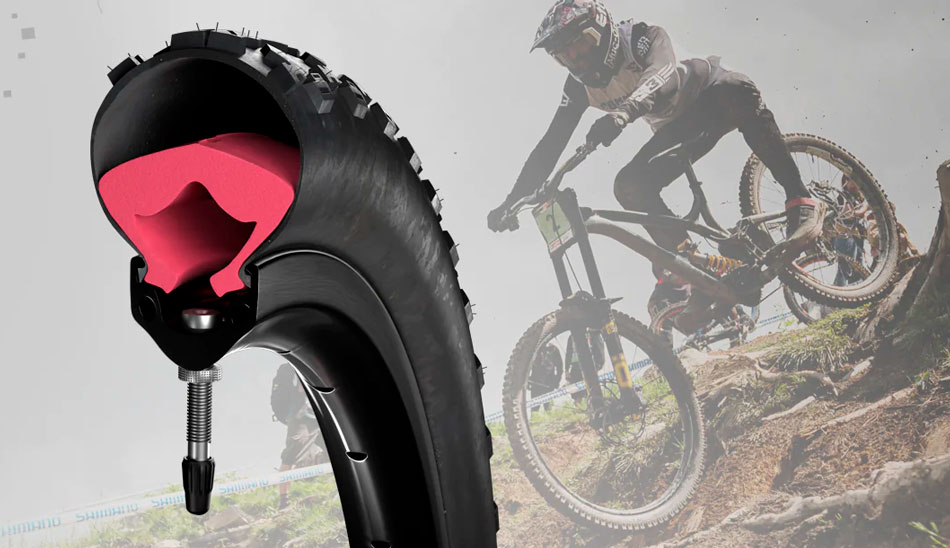 Tannus Armour Tubeless
Tannus Armour Tubeless
Advantages of the Tubeless System
Here are the main benefits of the tubeless tire system compared to the traditional tire and inner tube setup.
1. Maximum Puncture Protection
This is the most significant advantage for most cyclists. By removing the inner tube, you eliminate the risk of pinch flats, one of the most common causes of punctures. Sealing liquid also helps plug most small diameter punctures in tubeless tires, reducing punctures by up to 80-90%.
2. Improved Handling
Another advantage is that tubeless tires allow for lower air pressure, as there’s no risk of pinch flats and the tire beads are reinforced. This flexibility lets you customize the tire to match the terrain conditions.
Lower pressure offers two distinct benefits:
- Better grip and traction on sandy or wet terrains, improving safety and even speed.
- Increased riding comfort due to the added cushioning provided by the under-inflated tire.
This flexibility is especially noticeable when choosing the pressure for tubeless 29-inch mountain bike tires.
The benefits of lower tire pressure also apply to road cycling. Depending on road conditions, you can safely lower the pressure more than with traditional tires. Lower pressure is particularly beneficial in these scenarios:
- Wet asphalt: increased grip allows for faster speeds without compromising safety.
- Uneven road surfaces: the tires offer better cushioning, reducing bumps and making rides smoother and faster.
For more information, check out this article on The correct tyre pressure for road bike tyres.
Disadvantages of Tubeless
While the tubeless system has many advantages, it also has some drawbacks that you should consider to ensure a satisfying experience.
1. Higher Economic Cost
Tubeless tires are more expensive and you also need to factor in the cost of the sealing liquid.
2. Difficulty of Assembly
This is the biggest challenge, particularly with road wheels. Fitting or changing a tubeless tire for the first time can be tricky, even with a foot pump, and nearly impossible with a mini pump. To successfully mount tubeless tires at home, here are some tricks and solutions:
- Using a foot pump, you can mount the tire if it’s not too stubborn. Ensure the sidewalls are perfectly centered on the rim and pump quickly for a few seconds. Applying a bit of soapy water on the bead can help slide it into place. Removing the core and connecting the pump directly to the valve can also increase airflow. Once inflated, plug it with your finger and quickly insert the core.
- Tubeless pumps with chargers are much easier and are the best solution at home. Check out this video explaining how to mount tubeless tires.
- Air compressors at gas stations are another option, but remember you'll need an adapter for Presta valves.
- CO2 cartridges are an excellent solution, both at home and on the road. This video explains how to inflate a bike tire with a CO2 cartridge.
3. Higher Maintenance
Another downside is that tubeless tires require more attention. We’ll discuss maintenance later in this article. From our perspective, the benefits far outweigh the additional effort required.
4. Less Effective on Road Tyres
Higher pressure and temperatures on road tires mean that the sealant used effectively on mountain bikes might not work as well on road tires. Instead of sealing a puncture, the liquid sealant could leak and spray over the bike. Fortunately, more versatile, road-specific sealants are available. Many road cyclists dismiss tubeless tires after a bad experience with an inappropriate sealant. Selecting the right best tubeless road tires, available at Mammoth, can make a big difference.
Tubeless System Maintenance
The key precaution with the tubeless system is to keep the sealing liquid active. Otherwise, you'll lose puncture protection. Here are two important tips:
- Sealant must be refreshed every two or three months, depending on the liquid used. You don't need to break the bead to refresh the liquid; it can be injected through the valve by removing the core.
- Don’t let the tire lose too much pressure, as air will quickly dry out the sealant as it enters. A tubeless tire always loses a certain amount of air, so it’s essential to check the tire pressure before each ride. When the bike isn’t in use, check the tire pressure and turn the wheel at least once a week.
Even though the system is reliable, no system is 100% foolproof. Always carry spare parts and tools to fix a puncture or crack. Besides an inner tube, patches, a pump, and/or CO2, it’s wise to bring a repair system for tubeless tires, such as tubeless wicks or the Mammoth cold retread kit. Both systems allow you to repair a puncture without removing the tire. We demonstrate their usage in this video on Emergency Mechanics for Wheels.
Tubeless Overview
The tubeless system is undoubtedly an advantage for mountain biking and gravel cycling. With proper maintenance, your tire can stay puncture-free for years. Although it requires more care, periodic maintenance at home is far preferable to repairing a puncture on the trail, especially when riding in a group, as punctures and repair times can multiply.
On the road, the advantages are also clear, especially for amateur and touring cyclists. High-pressure tubulars or some of the latest tires with inner tubes still dominate, but only for very demanding cyclists or competitors. Time trial disciplines are increasingly adopting tubeless tires, as the time lost due to a puncture can be decisive. They are also favored by many cyclists in the great classics on pavé, such as Paris-Roubaix.
We are tubeless users ourselves and always recommend this system. You can find the widest range of tubeless tires for all disciplines, along with expert advice on selecting the right tire for every need, at our Mammoth stores and our online store mammothbikes.com/en/.
Extrusion Tube,Pvc Tube Mold,Pvc Extension Tube,Pvc Flexible Tube
Wuxi Jierui Changkun New Material Technology Co., Ltd , https://www.plasticstrapsll.com
